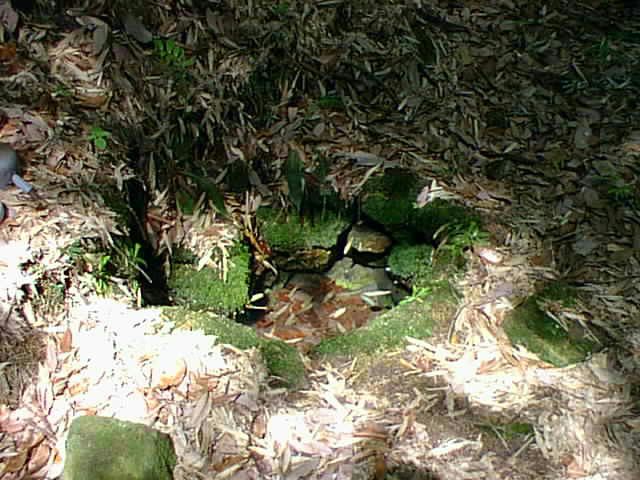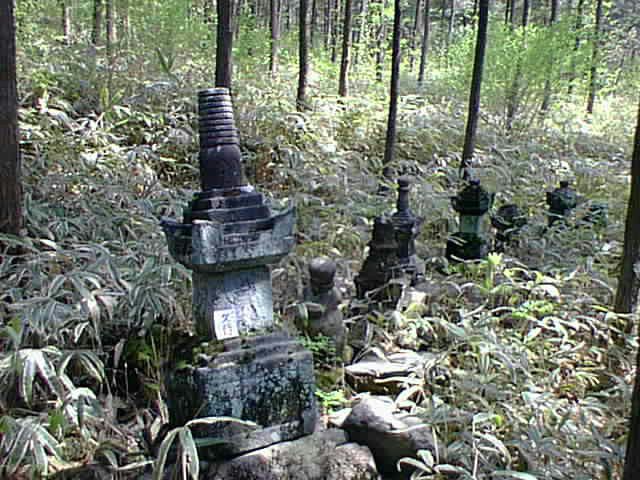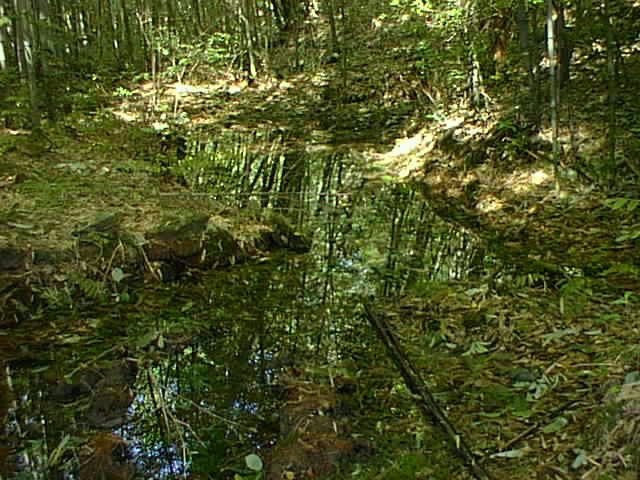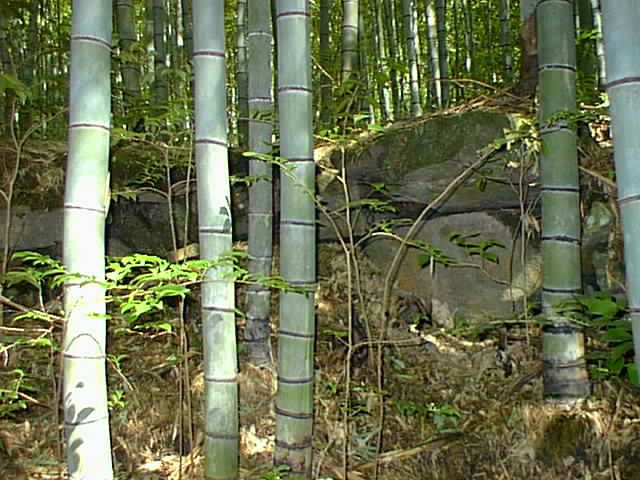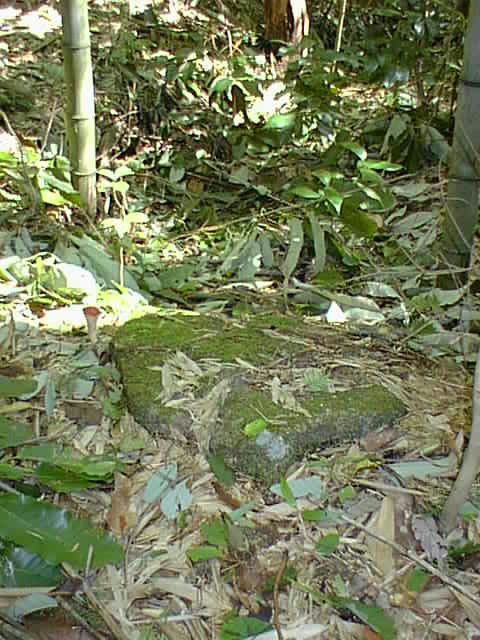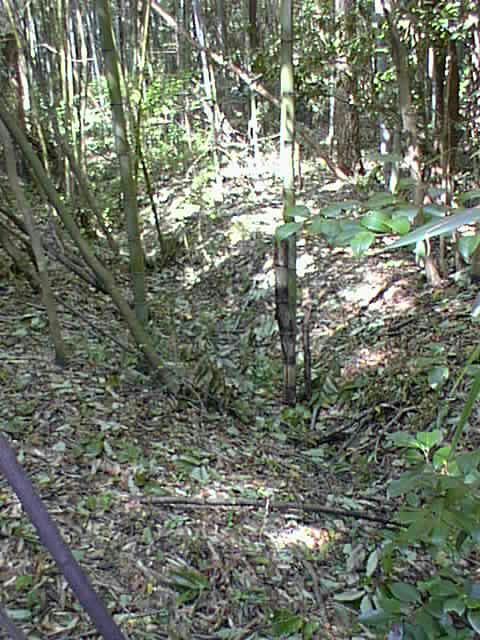 |
Around the Koeji Temple Ruins

| There is a fairly flat land at the foot of the south site of Mt. Jyogane
in Uenaegi. It is now covered with bamboo wood and grove , but this place
is the site of the Koeji Castle , the castle main building and the samurai
residence , and now there is only Kannon-do. As for the remains , in addition
to the ruins of the foundation stones of the temple , masonry , old wells
, garden pond , moats , etc. Hokyointo Tower , and Gorinto Tower remain
in the surrounding area. According to the history of Kiso ancient times , "On the flat land to the south of the castle , there is a mansion site that still remains its remains. It's said to be the site of the castle owner's residence. There are several mansions surrounded by moats in all four directions , all of which are said to be the mansions of the chief retainers." The area around Koeji Temple ruins is located on the hill of Fukuoka , and the remain that seem to be the remains of the building remain , and it is probable that the samurai holls were scattered from this area to the area around Henkoji Temple ruins. Most of the medieval samurai were rooted in rural areas , half farming and half samurai life. And even in the rural areas , they set up a mansion by choosing a hill overlooking the entire village , or a major transportation point or flat land . The root of Mt.Jyogane of Uenaegi exactly met this condition. Kamakura , where the Kamakura Shogunate was opened , is a natural fortress surrounded by mountains on three sides and the sea on one side. The flat land on the south side of the root of Mt. Jyogane , where Koeji Castle was located , is a natural fortress surrounded by mountains on three sides and Koeji Pond on one side. Although the scale is different , the similarity between Kamakura and the flat land on the south side of the root of Mt. Jyogane is noticed. |
Click on the photo to enlarge it ...
